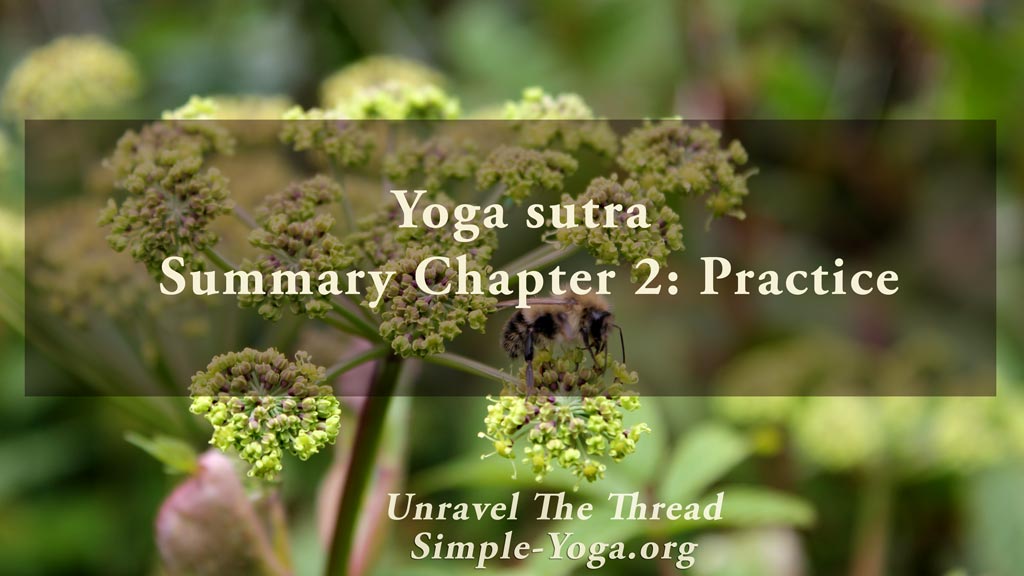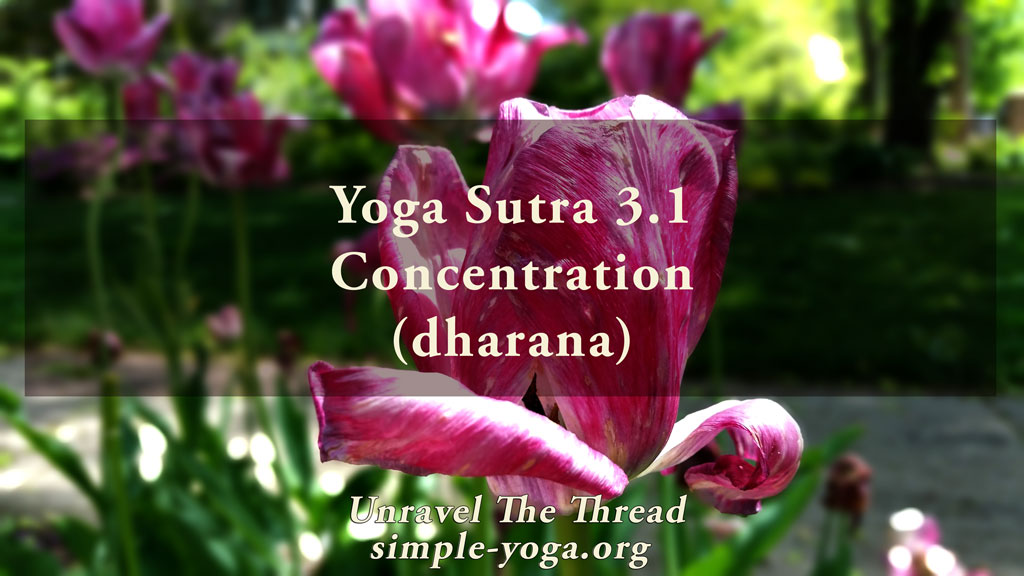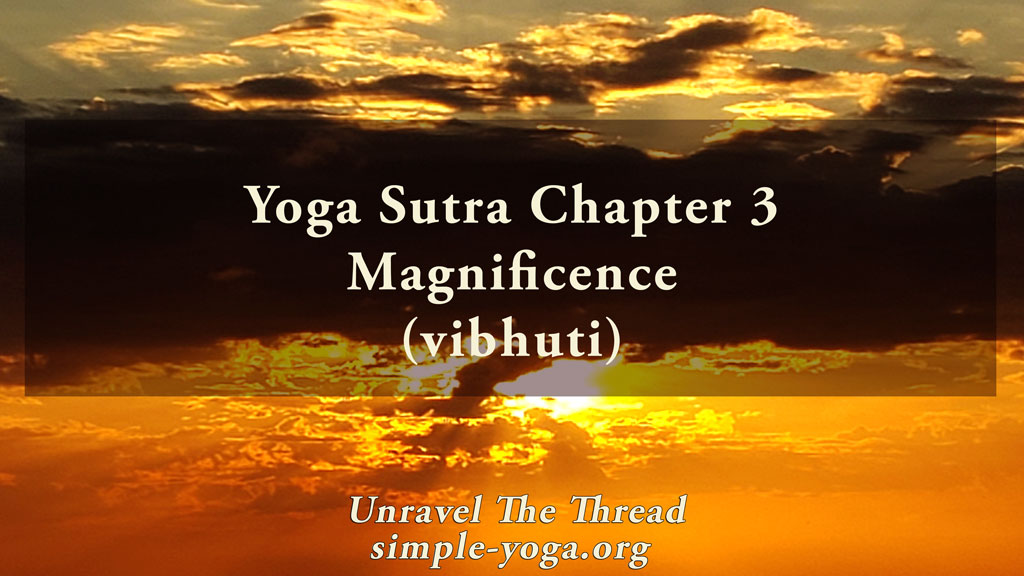
Summary of Chapter 2 of the Yoga Sutra
May 11, 2021
3.1 Concentration – dharana
May 30, 2021
Summary of Chapter 2 of the Yoga Sutra
May 11, 2021
3.1 Concentration – dharana
May 30, 2021Chapter 3 Magnificence – Introduction

The title of Chapter Three of the Yoga Sutra, vibhuti, may be translated as penetrating, abundance, welfare, wealth, magnificence, great power, prosperity, splendor, greatness, and fortune. The overall theme in this chapter is the advanced meditation practices and how they reveal the subtle aspects of reality. The sutras in this chapter can be organized in the following groups:
- Concentration, meditation & integration [3.1-3.8]
- Transformation [3.9-3.15]
- Meditative integration & its effects [3.16-3.37]
- Warning [3.38]
- Subtle energy [3.39-3.44]
- Highest attainments [3.45-3.50]
- Freedom [3.51-3.52]
- Purpose [3.53-3.56].
Regarding Extraordinary Powers
Some interpretations of the Yoga Sutra cover Chapters One and Two and the first dozen or so verses in Chapter Three, choosing to set aside comment on the rest of the original work by Patañjali. In this third chapter, out of a total of 56 verses, 24 sutras talk about the extraordinary effects of applying a meditation technique called samyama defined at the beginning of the chapter. This means that 12% of the Yoga Sutra deals with some sort of extraordinary or supernatural powers. In fact, there are more sutras dedicated to these powers than to asana and pranayama combined.
It has often been said that the legendary 20th century teacher, T. Krishnamacharya, used public demonstrations of extraordinary powers such as complex asanas and feats of force (like lifting heavy objects with his teeth and stopping his pulse) in order to revive interest in yoga during the 1920s and 1930s. Krishnamacharya’s son Desikachar told the story of asking his father to teach him how to stop his own heart, only to receive a negative response explicitly indicating that such feats were not useful to society and that they could become ways for self-aggrandizement. This is but one example of this topic in more recent times. There are countless accounts of supernatural powers (siddhis) in the South Asian subcontinent. Many of these accounts present these powers as the result of practicing high levels of meditation. Indeed, in the Monier-Williams Sanskrit-English dictionary, the definitions of yoga include supernatural means, charm, incantation, and magical art; and the definition of a practitioner of yoga, a yogin, includes magician, conjurer, and someone possessed of superhuman powers. Some scholars suggest that the long history of yoga is related to early shamanic practices as well as to practices directed to gain occult and supernatural powers.
Perhaps a useful approach is to consider the objective of your yoga practice. For instance, practicing the yamas and niyamas are effective ways of creating harmony within and around you. Engaging in asana practice can be a way to facilitate optimal body function by removing inefficiencies and obstructions so that energy, nutrients, oxygen, and information flow efficiently. Of course, some people may choose to regard asana as a goal in itself and thus may prefer to practice postures and movements to find the limits of what their bodies can do. Pranayama can be practiced with the goal of expanding one’s capacity to inhale, exhale, and withhold inhalation and exhalation to find the complete range of function of the respiratory system. In addition, it is also possible to practice pranayama as a way of purifying one’s body, to heighten perception of subtle energy flow in one’s body and/or to grow in one’s ability to concentrate. Similarly, pratyahara can be practiced as a way to orient one’s attention inward. Pratyahara may also be practiced with the goal of developing the ability to feel the internal vibration of specific organs to the level of being able to notice differences among organs, or between one kidney and the other. Similarly, concentration may be practiced as ways to deepen one’s capacity to focus one’s mind so that all extraneous thoughts – including thoughts related to one’s perceived identity – do not interfere with one’s presence in any way.
Taking any one of the limbs of yoga to its limits will likely result in extraordinary abilities. For instance, pranayama practitioners can demonstrate a capacity to inhale for more than 40 seconds and to exhale for more than 40 seconds without any gasping or tension. It has been suggested that Krishnamacharya’s approach to reducing his pulse at will was directly related to his capacity to regulate his breath. It may be fair to say that the average person may not be able to control his or her breath to that extent. Moreover, at a time when many people are unconsciously training their minds to keep jumping from one focal point to another all the time, it may be extraordinary to be able to stay focused on a single idea or object for an extended period.
As you traverse through this chapter, keep the recommended yogic attitude, open mind, and open heart to discover with curiosity what may be possible. As part of keeping your mind open, it might be possible that there is no single correct answer. The comments to these sutras use mostly previous testimony from trustworthy sources (agama 1.7). Since direct experience is the preferred yogic approach (pratyaksha 1.7), the practices suggested follow a logical and non-dogmatic perspective. As usual, you are in charge of investigating these practices and how they contribute to enhancing the quality of your participation in your life.
If you prefer, you may listen to the podcast:
Unravel the thread is now available as a book!
If you find Simple-Yoga.org and Unravel the thread useful, consider supporting my labor with a donation, you may also donate using PayPal or Venmo. Thank you!
